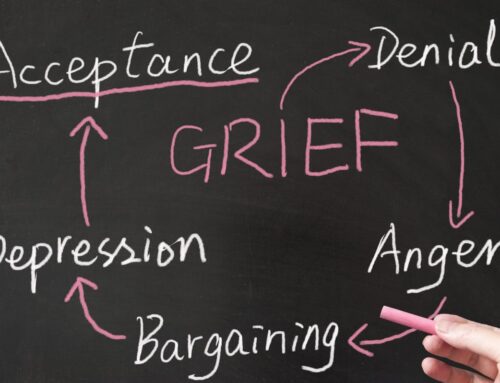The 3 C’s (choose, connect, communicate) are a practical compass for navigating grief, not a set of stages. They offer small, doable actions that steady the grief process and support the healing process during a deeply personal emotional journey.
- Choose: make one micro decision that restores control, such as eating breakfast, taking a shower, or sending one text. These simple things reduce “grief brain” fog and restart daily routines.
- Connect: lean on a support system, for example a family member, friends, a support group, or a ritual that provides comfort, so you feel less isolation and more connection.
- Communicate: name your emotions and needs (“I feel overwhelmed today, please text before visiting”), which helps others offer the right help and creates a safe space.
Use the three C’s whenever grief brings confusion, during the holiday season, or when waves of anger, guilt, or low mood arrive. They are effective coping strategies that keep life moving, protect well being, and help you keep moving forward as you adjust to a new reality after a loved one has died. If you are still struggling after implementing these strategies we recommend that you talk to a trained grief counselling professional.
What are the 3 C’s of grief?
Choose, connect, communicate. These three C’s give you a simple way to navigate grief when the grief process feels like an emotional rollercoaster. They are not a diagnosis or a set of different stages you must pass through. They are a pocket guide for developing effective coping strategies during a deeply personal grief journey.
- Choose small next steps that restore a sense of control.
- Connect with people, community, values and rituals that provide comfort.
- Communicate your emotions and needs so others can offer practical help.
Use the 3 C’s of grief to steady daily life while you are processing grief and finding a way of moving forward with your new reality.
What does “choose” mean in grief?
Choose one manageable action today so life keeps moving, even when the “grief brain” feels foggy. After you have experienced loss, decision fatigue is common. Small choices cut through overwhelm and help the healing process begin. Think of “C’s of grief choose” as your first step in navigating grief.
Simple things that bring comfort:
- Daily routines: eat a simple breakfast, take a shower, stretch, then step outside for three minutes of morning light.
- Daily activities: walk to the letterbox, water a plant, tidy one surface, or reply to a single message.
- Self care: drink water, take prescribed medications on time, and schedule bed and wake windows.
Each micro-choice sends your body the message that you are safe enough to function. You do not need to feel motivated first. Choose, act, and let motivation catch up. If the day is hard, pick the tiniest action and celebrate it. That is effective coping in practice.
What does “connect” mean in grief?
Connect to a support system that feels safe and real. Grief brings moments of loneliness and confusion, so staying connected matters. Your network might include a family member, friends, a support group, community leaders, or meaningful spiritual practices. Connection does not erase pain; it gives it a safe space.
Ways to build connection:
- Ask one person for a short, regular check-in.
- Share stories about your loved one at a relaxed pace.
- Create a new tradition that honours your person during the holiday season and other holidays.
- Use rituals that fit your values, such as lighting a candle, planting a tree, or writing letters.
If your first circle is small, widen it. Many people feel obligated to “be strong” and decline help. You are allowed to accept support. Connection is essential for well being in the grieving process.
What does “communicate” mean in grief?
Communicate with a simple script: emotion + context + request. Clear words reduce misunderstandings and help others help you.
- Emotion: “I feel exhausted and sad today.”
- Context: “It is one month since we lost our loved one.”
- Request: “Please text before visiting, and could you help with groceries?”
Set boundaries kindly: “I appreciate check-ins. Please avoid surprise visits,” or “I am not ready to talk about major decisions yet.” If speaking is hard, write. Journalling, voice notes, or letters to the person can unlock words you need to talk later.
Who created the 3 C’s?
Multiple grief educators use “choose, connect and communicate.” It is a plain-language framework, not a proprietary therapy. Use it if it helps you, and skip what does not. Some people also like Worden’s four tasks of mourning, which highlight accepting the loss, processing the pain, adjusting to life changes, and finding an enduring connection while moving forward with life.
What is the grieving process?
Grief is a natural part of life with emotional, cognitive and physical dimensions. Feelings arrive in waves, not in straight lines. The intensity rises and falls over weeks and months as you rebuild daily routines and adapt to a new reality. Culture, relationship, and the circumstances of the loss shape timelines and rituals. Your path is deeply personal, and it is normal for it to look different from someone else’s.
What are the stages of grief?
Stages are common patterns, not mandatory steps. You may feel disbelief, anger, bargaining, low mood or acceptance in any order, and you might also feel joy or relief at times, especially after long illness. Do not measure yourself against charts online. Measure progress by whether you can function a little more, connect a little more, and find small moments that bring comfort.
What does healthy grieving look like?
Healthy grieving shows waves of emotion without total shutdown, basic routines that keep going, and moments of connection or meaning. Helpful practices include gentle movement, a steady sleep window, meals, sunlight, and values-aligned rituals. Flags for extra help include persistent numbness, isolation, escalating depression, or an inability to resume essentials like bills, hygiene, and work or study. When your body feels stuck on high alert, body-based strategies can help steady the system. Read Somatic Psychotherapy for trauma-sensitive ways to settle.
What are the physical symptoms of grief?
Common effects include fatigue, headaches, chest tightness, sleep disruption and appetite changes. This is stress physiology at work. Gentle regulation helps: slow breathing, stretching, short walks, regular meals and hydration. See your GP for severe, new or worsening symptoms, or if persistent anxiety concerns you. For comparisons, see What Are the Signs of Anxiety.
How do people typically cope with loss?
Helpful coping includes storytelling, time in nature, creative expression, community time, and values-based routines. Less helpful coping includes avoidance, overwork, excess alcohol or substances, and shutting others out. If you feel stuck, professional guidance can help you build effective coping strategies tailored to your situation. To see how therapy supports the healing and grief journey, read What Does Psychotherapy Do.
Are the 3 C’s used in therapy?
Therapists often embed the three C’s inside evidence-based treatment. Cognitive Behavioural Therapy reduces unhelpful thoughts and avoidance and supports daily activities that stabilise mood. Interpersonal psychotherapy helps with role changes and conflicts in family and friends networks. When grief remains intense and impairing for months, grief-focused treatments can help. Learn more in Cognitive Behavioural Therapy.
How can I explain grief to children or teens?
Use clear, concrete language and honest answers. Avoid euphemisms. Keep routines steady, validate emotions, and invite questions over time. Offer choices about participation in rituals and remembrance. If the whole family is affected, see Your Guide to Personalised Family Therapy for ways counselling can create a safe space for communication at home.
Quick 3 C’s checklist you can use today
- Choose one action: eat breakfast, take a shower, reply to one message, or walk around the block.
- Connect to one person or group: schedule a check-in, attend a support group, or share a memory with a friend.
- Communicate using the simple script: “I feel overwhelmed this morning because the paperwork is hard. Please text before visiting and, if you can, help me with forms.”
Bringing the 3 C’s into tricky moments
- Holiday season: plan one new tradition that honours your person and one activity that reduces stress. Give yourself permission to leave early.
- Anniversaries and reminders: expect a spike in feelings. Choose one anchor, connect with a safe person, and communicate one need.
- Work and study: ask for temporary adjustments. Communicate deadlines you can meet and those you cannot.
- If you live alone: build micro-routines to stay connected, such as a nightly text, a weekly community class, or a neighbourly tea.
- If you feel obligated to “be fine”: remind yourself that grief is a normal part of love. You are allowed to ask for help.
Grief changes your sense of self and the shape of life, but it does not erase love or your ability to move forward. The three C’s keep the next step small and doable: choose, connect and communicate. If these steps are not enough, a counsellor can match support to your needs so you can keep your footing while you heal.
Related Posts
Fees And Rebates
We offer cost-effective solutions that can fit within your budget. The insights and skills acquired in therapy can continue to positively impact mental and emotional health long after the therapy sessions have ended, making it a truly worthwhile investment in yourself.















